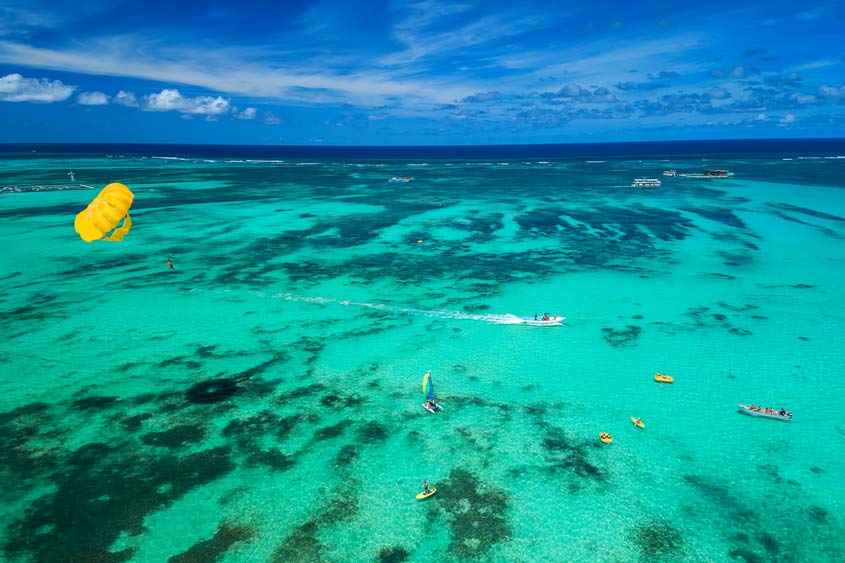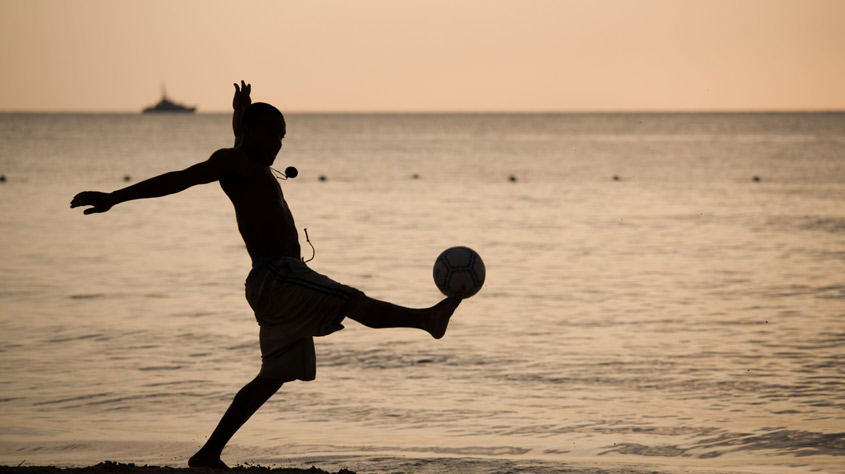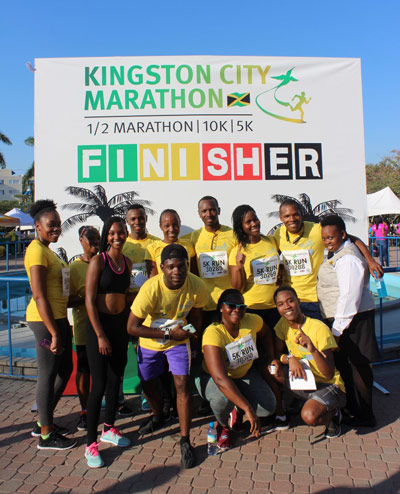
Intellectual property, sports and tourism: a perfect match
By Carole Beckford, Sports Marketer, Kingston, Jamaica
Sports events are becoming a major driver of economic development globally.
Global management consultants, AT Kearney, have estimated that the industry is worth around USD 620 billion. That figure represents a significant portion of the USD 4.5 trillion estimated value of the tourism industry as a whole.
Sports and related sectors, ranging from infrastructure, training, and events to manufacturing and retail of sports equipment and hospitality, make up a significant share of what goes on in the tourism industry. Research by management consultants, KPMG Peat Marwick, suggests that the global sports industry will experience steady annual growth of between 7 and 11 percent up to 2023. The web of commercial relationships that enable the sector to deliver sports to fans around the world are underpinned, in large part, by intellectual property (IP) rights, from patents and designs to trademarks and media rights.

These data point to one thing – IP, sports and tourism combined make a significant direct contribution to the global economy and generate far-reaching indirect benefits in terms of promoting physical well-being, developing notions of fair play and mutual respect, and cultivating social cohesion and a sense of community.
A lasting legacy
When a destination, such as Kingston, Jamaica, recognizes the potential of sports events to boost tourism, and incorporates such events into its economic planning process, it must also have a well-defined IP strategy. Strategic use of the IP rights held by organizers of sports events can create significant opportunities for wealth creation, employment and development of urban infrastructure. Through the sale of broadcasting rights, commercial sponsorship and merchandizing deals (underpinned by trademark rights), organizers of sports events can secure the funds needed to stage these events, including the cost of creating or upgrading sports stadia and other physical infrastructure to ensure the event runs smoothly and sports fans have a comfortable and safe experience. In this way, the combination of IP, sports and tourism creates opportunities for public and private investment in urban infrastructure and services, and a lasting legacy for the host country or city and its inhabitants.
From a tourism perspective, a high-profile sports event can draw people from across the globe. Sports fans will travel from far-and-wide to watch their sporting heroes compete and to soak up the atmosphere of a sports fixture. Effective marketing and promotion of an event and a destination will both enhance the support of fans and attract tourists from around the world.
Many will buy memorabilia – a commemorative T-shirt, cap or other sports apparel, key rings, and other accessories associated with the event –all produced under a merchandizing agreement – and will purchase other services available at the venue. IP rights underpin all of the commercial relationships that make these offerings possible and are an important source of income for sports event organizers.
With every passing decade, the incentives embedded within the IP system (i.e. to recognize and reward inventors and creators for their efforts while also ensuring broad public access to their outputs) have fostered technological developments in sports equipment, track and field measuring equipment, broadcasting and information technologies. These innovations have helped enhance athletic performance and have fueled the global popularity of sports by bringing fans ever closer to sports action.

The economic incentives of IP
Similarly, the IP system, through trademark rights, in particular, has enabled organizers of sports events at all levels, national, regional and international, to strengthen their brand value, create additional revenue streams from sponsorship deals and licensing agreements with commercial partners and attract fans and media attention to their event.
Media rights are another form of IP that are at the top of event organizers’ agendas. In recent decades, these rights have been a lucrative source of income for them. For example, in the United States, the National Football League (NFL) media rights are astronomical, equivalent to each team being paid USD 225 million annually. The NFL, the highest value sport in the United States, has also managed to sell its broadcast rights across four networks, namely, Fox, CBS, NBC and ESPN. The estimated value of these rights is close to USD 6 billion. For the 2017/2018 season, these networks invested between USD 600 million and USD 1.95 billion for Thursday, Sunday and Monday night packages. The Sunday night package broadcast by Fox, CBS and NBC is the highest value, worth around USD 3 billion, according to sportspromedia.com.
Over the years, the Summer and Winter Olympic Games, as well as the FIFA World Cup, have all attracted ever-bigger media rights deals. For example, FIFA was able to raise USD 1.85 billion from the sale of media rights for the 2018 and 2022 World Cups.
Changing landscape

every year, attracts large numbers of sports tourists and has the potential
to generate significant revenues for the city (Photo: Courtesy of
Kingston City Marathon).
However, as consumers develop a taste for bite-size viewing or sports snacking, sports event organizers and, to a growing extent, traditional broadcasters, face the increased influence of and competition from over-the-top (OTT) digital players.
Take, for example, the English Premier League (EPL). A report by Andrew Ryan in August 2018 claimed “The bubble has burst!” in response to the outcome of the Premier League’s latest UK broadcast rights tender released in February 2018. The total financial commitments between Sky and BT were approximately GBP 500 million (approximately USD 652 million) lower than the record GBP 5.13 billion (approximately USD 6.6 billion) in fees paid by the two broadcasters in the previous cycle (running from 2016 to 2019).
Similarly, the US-based sports broadcaster, ESPN, has reportedly lost 9 million subscribers over the last three years. The UK’s Sky Sports has also reported a 19 per cent dip in the EPL viewing figures.
These data reflect a change in the way sports fans consume sporting action. Increasingly, young people favor social media platforms over traditional broadcasting channels to watch sports. In China, mobile phones are the most popular media device for sports viewing.
Sports tourism
The remarkable achievements of star athletes have helped countries and cities build and develop their reputation as a “must-visit” destination. Following the stellar performances of Usain Bolt at the 2008 Olympic Games in Beijing and 2009 IAAF World Championships in Berlin in 2009, the athlete’s hometown of Trelawny in Jamaica and the high school track-and-field event held every Spring in Jamaica, more popularly known as CHAMPS, have attracted a remarkable increase in interest.
More and more destinations are lining up to host major sporting events. Some of these signature events draw travelers to the host city, even when they are not attending the sporting event itself. Take for example, those who visit Wimbledon, home of the Wimbledon (tennis) Championships in London or the US (tennis) Open in New York or NASCAR (motor racing) in Chicago. This means that sports tourism is soaking up an expanding portion of the bigger tourism market.
Even small developing nations like Jamaica, which, since 1948, has dominated the world in so many sports, most notably in track and field and boxing, can benefit from sports tourism built around strategic use of IP rights. Its cameo appearance in world football in 1998 and at the Winter Olympic Games in Calgary later that year, immortalized in the box office hit, Cool Runnings, did much to trigger interest in the country and draw tourists to Jamaica’s shores. The film continues to run on television networks around the world and the novelty of seeing Jamaicans on ice still draws tourists to Jamaica.
According to the World Tourism Organization (UNWTO), the global travel and tourism industry is worth around USD 7 trillion. Tourism is one of the world’s fastest growing industries, enjoying annual growth rates of 6 percent. Around 1.8 billion international tourists are expected to travel by 2030.
And, of particular relevance here, the sports tourism sector is one of the tourism industry’s fastest growing areas, generating billions of dollars every year. Sports tourism is a vast international business attracting investment, political interest, media attention and thousands of traveling participants and spectators. The estimated USD 800 million spend on sports tourism represents close to 10 percent of all tourism-related earnings.
As sport is such a sizeable chunk of the tourism industry, it makes sense to make every effort to leverage a nation’s sporting success to attract sports tourists to a destination.
Sports tourism takes a variety of forms. It may consist of top-tier championships, such as the Olympic Games, World Championships, NASCAR, or softer sporting activities, such as hiking, skiing, rowing and sailing. It may also include less formal local, regional or international competitions that also attract large numbers of people. Sports tourism may also include locations where famous athletes live or Sports Halls of Fame.
Destinations that host sports events can enjoy considerable benefits by attracting tourists who may subsequently return for a vacation. Sport tourists are among the biggest spenders in the business.
Recognizing opportunity
Focusing efforts on boosting sports tourism presents opportunities to showcase the favorability of a given destination and enhance its profile on the global stage. Sports events also help extend the traditional tourist season, making it possible to appeal to a broader tourist population.
IP, sports and tourism are a potent combination. A coherent approach to sports and tourism underpinned by an effective IP strategy can drive public interest in travelling to a destination, especially if it is the venue for an exciting sporting engagement. An economic development plan that effectively integrates sports into its tourism strategy can have a huge impact on a country's ability to attract visitors and generate local employment opportunities. It can also boost its competitiveness as a tourist destination and its international standing, attracting investment and additional opportunities for business growth.
The WIPO Magazine is intended to help broaden public understanding of intellectual property and of WIPO’s work, and is not an official document of WIPO. The designations employed and the presentation of material throughout this publication do not imply the expression of any opinion whatsoever on the part of WIPO concerning the legal status of any country, territory or area or of its authorities, or concerning the delimitation of its frontiers or boundaries. This publication is not intended to reflect the views of the Member States or the WIPO Secretariat. The mention of specific companies or products of manufacturers does not imply that they are endorsed or recommended by WIPO in preference to others of a similar nature that are not mentioned.